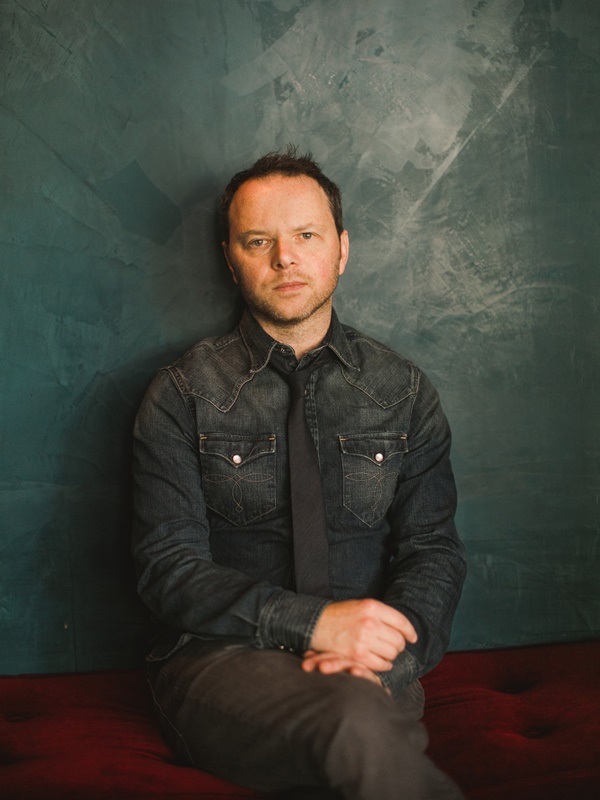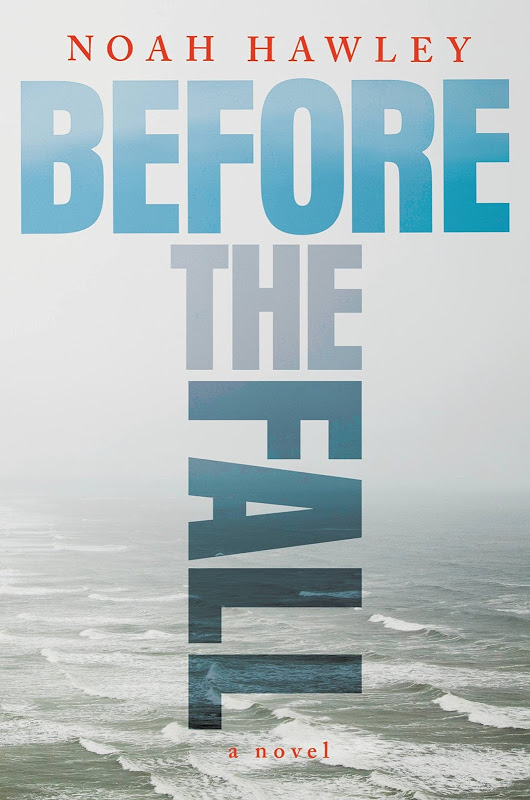Art World
Author Noah Hawley Tracks Rise of the New Medicis In His Summer Blockbuster ‘Before The Fall’
A painter is the story's protagonist and unwitting hero.

A painter is the story's protagonist and unwitting hero.

Eileen Kinsella

If you haven’t already torn through Noah Hawley’s thriller, Before The Fall, you still have a few sun-soaked summer weekends to do so.
Contemporary art looms large in the plot, in the form of a middle-aged painter who serves as the story’s protagonist and unwitting hero as well as an all-too-familiar type of uber-wealthy twenty-something art patron.
The tale opens with the mysterious crash of a private plane that plunges into the ocean mere minutes after takeoff from Martha’s Vineyard en route to Teterboro airport near Manhattan. The only survivors of the crash are Scott Burroughs, the aforementioned painter, whose swimming skills enable him and another plane passenger, the four-year-old son of David Bateman, the news magnate who chartered the plane, to survive by getting them both safely to land after an eight-hour ordeal in the ocean.
True to form for our media-obsessed culture, what seems from Burroughs’s point of view to be sheer luck and determination against impossible odds, quickly becomes the focus of suspicion as investigators spark a feeding frenzy.
Hawley delves into the details and inner lives of a sprawling cast of related characters —the passengers on the plane, the conspiracy-crazed employees of the FOX News-esque empire that Bateman forged, the suspicious and wise-cracking NTSB and FBI investigators on the case, and lastly, the heiress and arts patron named Leslie “Layla” Mueller who helps shield Scott from the media circus by allowing him to hole up in her lavish West Village townhouse, while also dangling the promise of turning him into a contemporary art star.
artnet News caught up with Hawley in a phone interview, where he answered our questions about contemporary art and the roles played by various art world figures in the book.

Noah Hawley, Before the Fall (2016). Courtesy of Grand Central Publishing.
What is your knowledge of or involvement with the art world?
I’ve had a longstanding appreciation of art and my mother was a painter and writer. Growing up in New York City, visual art was all around me, and over the years I went to to a lot of museums and galleries. There’s something in the idea of art—the space it gets created in and the space in which we experience it—that feels similar to the space you try to write from. [Art is] where I go whenever I need inspiration, it’s not for research. Sometimes you just want to be in a person in a space experiencing the unexpected.
Who are some of your favorite artists?
I was a big Francis Bacon fan even the first time that I saw his work. I like Lucian Freud and Jenny Saville, who does this sort of body dysmorphic work. There is something about that exaggeration of the human in the Francis Bacon work that seems so horrifying— like a vacuum you could project a lot of things on to.
I tend to be drawn to more modern work. I’m always on the lookout for a new voice.
What becomes a key part of the story is that Scott was working on a series of “disaster” paintings; train derailments, catastrophic storms, or car wrecks. Tell us about the idea for those themes.
He was a guy whose own life was a disaster, and so he found himself drawn to these [works]. As we realize each painting, whether it is of a train derailment or of a tornado bearing down, or a highway pileup, the subject matter becomes clear. There is always this one woman who is wandering through the wreckage and a big question in the book becomes “Who is that woman in his mind and in his past?” I liked that idea.
The last painting that I put in—really as we were going off to press—was the text one. It just said: “We are sorry for your loss”. White text on black background and I like that sentiment. Again, it sums up so much. The words are in keeping with the concept for the series. Once I started going down that road with what these paintings could be, I saw them as sort of photorealistic in a Gerhard Richter kind of way… almost like an Andy Warhol kind of car wreck—true to life and yet it’s also a fantasy.
What was the inspiration for Layla, the uber-wealthy twenty-something patron?
The first round of the modern offspring of billionaires, like of the Paris Hilton variety, were famous for being famous, they went to parties, etc. Now there is this whole circuit—the New York Times did a piece—you can go on over the whole year that takes you to Davos and Cannes and the Venice Biennale. It’s sort of half-philanthropic.
There is a real sense of the new Medici class that is out there. And you can become a patron in the way that [Charles] Saatchi did when he bought Damien Hirst’s entire library. Now that is a sort of regular model. Money has always been power, but then in this kind of world, this very young woman can come in and become this patron in a way that for an artist like Scott, she just changed your life on a whim. If she likes you, then you’re made.
The story seems like a natural to come to the big screen. Has it been optioned for a movie?
It’s at Sony and I’m finishing a screenplay. A conversation that I get a lot with readers is ‘How are you going to do the paintings?’ They really want to see that. It’s such a visual component of the book—you describe a painting and you intimate that if you could see this painting you would understand the character better. They feel like there’s this real piece of insight.
Paintings in movies are sort of like rock bands in movies. There is a question of how are you going to create work and make it really look like art? I see them as sort of photorealistic. The concept and subject matter is so clear.
Who would play Scott Burroughs? Who would play Layla?
For Scott, I think you need an actor of a certain age. He would need to be in his late 40s. You need to believe that he’s someone who can be an artist, a painter. Also, he should be someone who has lost something—time or something important to him.
For Layla, you want to feel that there is a certain beautiful arrogance there that needs to come through, but also a vulnerability. There is a part in the book where she says she really worries that people only talk to her because she’s rich, or because they want to have sex with her. On some level she doesn’t feel like she has earned this identity she has because it’s built on borrowed money, or someone else’s hard work.
Why did you choose to have an artist—and one who is as out of the mainstream as your protagonist? (Scott lives on Martha’s Vineyard and is something of a Luddite, lacking a computer or even a cell phone).
I like the idea that Scott is naïve on some level as to the thriller mindset that the rest of the world just takes for granted. I recently went to the Eames House in Pacific Palisades. There was a sense in that space that it was created as a place to play. This idea of play and childhood is the purest form of imagination, and in order to be an artist you have to leave yourself open to that. But those kinds of people don’t fare well in the real world of cops and robbers.